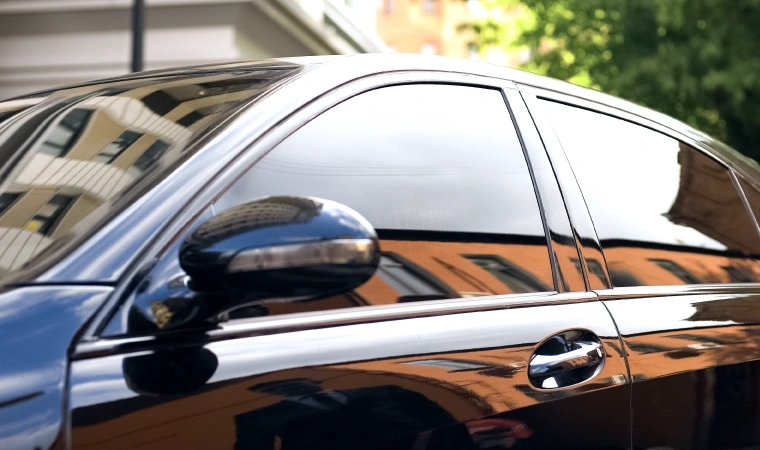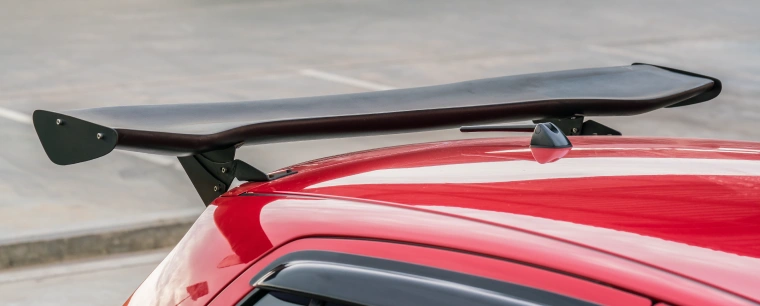Car Mods You’d be Surprised to Know are Illegal
![]() Published on: Thursday, 10th November 2022 |
Published on: Thursday, 10th November 2022 | ![]() Author: Jack Dreyer
Author: Jack Dreyer
Car modifications are all the rage at the moment. From changing the colour of headlights to tinkering with exhausts, nowadays it is common for people to alter countless things about their vehicles.
However, what many drivers don’t realise is that a fair few of these alterations can actually land them in trouble — some being cause for MOT failure, or even fines.
To stay compliant, read on and learn of the car modifications that just don’t cut it with authorities.
Modifying your car: Is it illegal?
Any change made to a vehicle that does not fall under the original manufacturer’s specification is technically classified as a modification. There are two main types of modification:
1.) Cosmetic car modification
This category refers to any changes that affect the appearance of a vehicle such as:
- Front and rear bumpers
- Paintwork
- Wheel accessories
- Interior LED lighting and light tints
- Dashboard accessories
2.) Performance-related car modification
As you’d imagine, these modifications change the ability of a vehicle to perform, affecting factors such as speed, fuel efficiency, and engine performance.
Before we begin, we should make it clear that not all car modifications are illegal, there are many that have no legal consequences at all.
It’s any modification that has the potential to put the driver, passengers, and/or any other road users in danger that becomes a problem. For example, excessively tinted windows might reduce driver visibility, or brake modifications may increase the stopping distance, heightening the chance of accidents.
1. Specific engine modifications
Anything engine-related is usually an instant red flag. This area of the car is very complicated and should only really be inspected by professionals. One of the most popular engine modifications is the use of Nitrous Oxide.
The aim of this is to increase the cylinder pressure in the engine to increase the engine load. This is extremely dangerous, as increased engine pressure has the potential to severely damage the engine — possibly even leading to engine failure.
2. Loud exhaust pipes
Similarly, anything to do with the exhaust is usually off-limits too. Quite a few drivers decide to tweak their exhaust pipes to give off that throaty, turbo roar we hear while we’re trying to get a lay-in in the mornings.
However, these drivers may be surprised to hear that exhausts that emit a sound louder than 74 decibels are actually illegal. For comparison, 70 decibels is in the middle of the softest sound a human can hear and the loudest that we can hear without feeling pain. As an example, 70 decibels is only as loud as a washing machine, dishwasher, or alarm clock.
Exhaust modifications aren’t all about sound, though. Exhausts also produce emissions and modifications can easily increase the number of emissions given off — producing noise pollution and environmental pollution at once.
3. Coloured headlights
There is a lot of legislation for road users to abide by when it comes to lights. Neon lights are specifically ruled out as an option for road users in the UK. Why? Because of their brightness and potential to dazzle other drivers, causing accidents.
Coloured tints on front and rear headlines are also not allowed. This is because the front headlights should always be yellow or white, and the rear headlights should be red to allow other drivers to identify cars from a distance. Unusual headlight bulbs (such as halogen ones with high colour temperatures) are not permitted, again due to their tendency to dazzle, but also because they give off a blue tinge — a colour reserved for emergency vehicles like ambulances and police cars only.
If your headlights are really weak, this will also be a cause for concern and you may get pulled over. You can read more about the rules and regulations for headlamps here on the government website.
4. Tinting your windows

As car modifications go, tinted windows are undoubtedly the most common. People often apply tinted stickers as a lining to their windows to make them darker. This is often because of the glare of the sun, but can be down to privacy reasons too.
According to the DVSA government website, front windscreens and front side windows are only allowed to be slightly tinted, while the rear windscreen and rear passenger windows are exempt from this law.
The rule specifies that any vehicle used since the 1st of April 1985 should:
- Let 75% of light through its front windscreen
- Let 70% of light through the side windows
Vehicles older than this must let 70% of light through both sets of windows. If your vehicle fails to meet these criteria you could receive:
- A prohibition notice that prevents your vehicle from benign used on the road until you remove the tint
- A penalty notice for a fine
- Court summons
The DVSA are very vigilant with this, using specialist light-measuring technology, so be careful.
5. Spoiler Alert
Lastly, falling under the cosmetic modification category comes changes to spoilers. While spoilers themselves are not against the law (since they come with the car), modifying them excessively can land you a fine.
If the changes you make to your spoiler are deemed unsafe and you are stopped by the police you may receive a fine and be asked to remove the spoiler on the spot.
Some examples of unsafe changes include:
- A loose spoiler, caused by altering its structural position. These may fly off and cause harm to other road users.
- Sharp spoiler edges that can cause damage.
- Spoilers that are too large and may obstruct driver visibility of the road behind.
As a general rule of thumb, your car spoiler should be no bigger than three inches wide and six inches above the roof.

